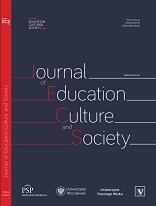INTERDISCIPLINARITY AND COLLABORATION IN HIGHER EDUCATION ENGINEERING COURSES
INTERDISCIPLINARITY AND COLLABORATION IN HIGHER EDUCATION ENGINEERING COURSES
LEAN THINKING APPLIED TO TEACHING AND LEARNING
Author(s): Margarida Morgado, Marcelo Gaspar, Mónica RégioSubject(s): Social Sciences, Education, Adult Education, Higher Education
Published by: Fundacja Pro Scientia Publica
Keywords: Engineering Education;Collaboration in Higher Education;CLIL;Interdisciplinary learning and teaching in Higher Education;
Summary/Abstract: Aim: The aim of the research is to discuss if the lean thinking methodology may contribute to enhance interdisciplinarity and collaboration in higher education engineering courses, namely when applied to engineering students at a Portuguese Higher Education Technology School. Methods. Lean thinking is an organisational methodology that uses innovation to organise and optimise human activities with the aim of eliminating waste. This methodology can be applied to a wide range of activities envisaging to mainly perform tasks that effectively add value to the related processes. When used in an educational context, this approach may also contribute to identifying which activities successfully contribute to add value to the students’ learning process, as opposed to being ineffective for that aim. Results. Current study focuses on interdisciplinarity through a set of collaborative Content and Language Integrated Learning (CLIL) tasks that were planned, tested and assessed in an engineering Higher Education context. Conclusion. One of the main aspects envisaged through the developed CLIL tasks was to contribute to the enhancement of peer-to-peer collaborative learning in an interdisciplinary context, another was to reflect on reciprocal cooperation methodologies that enhance interdisciplinarity in Higher Education.
Journal: The Journal of Education, Culture, and Society
- Issue Year: 9/2018
- Issue No: 2
- Page Range: 179-186
- Page Count: 8
- Language: English

